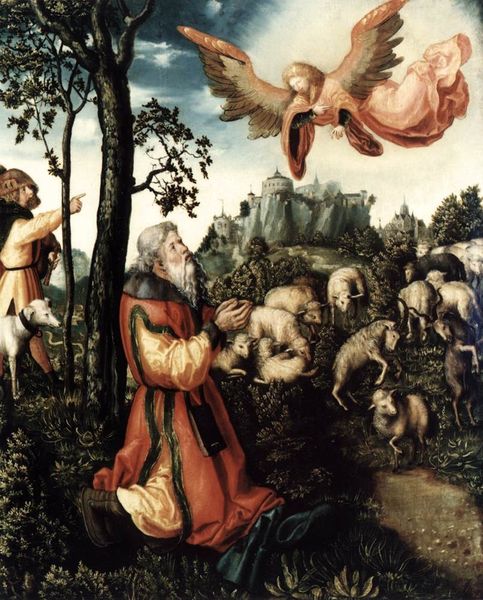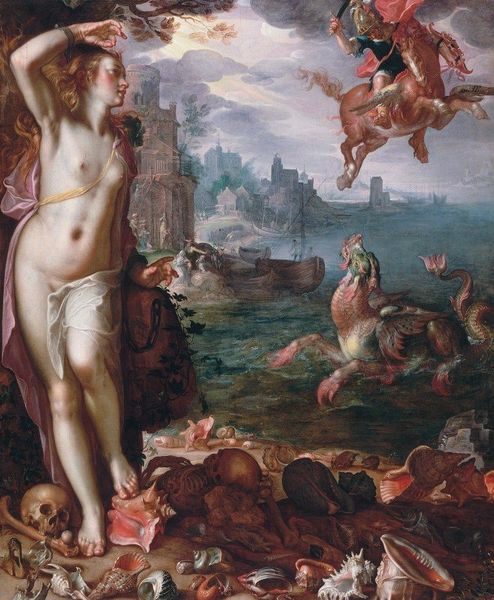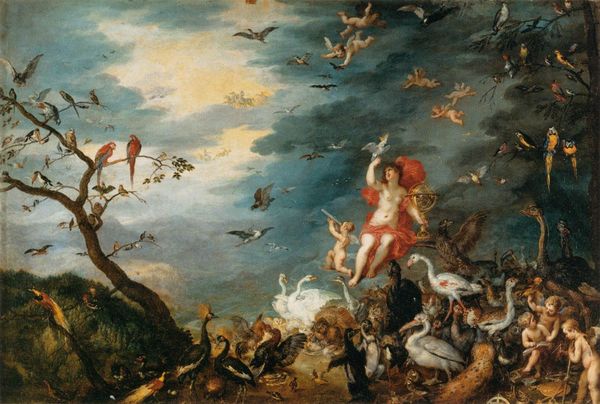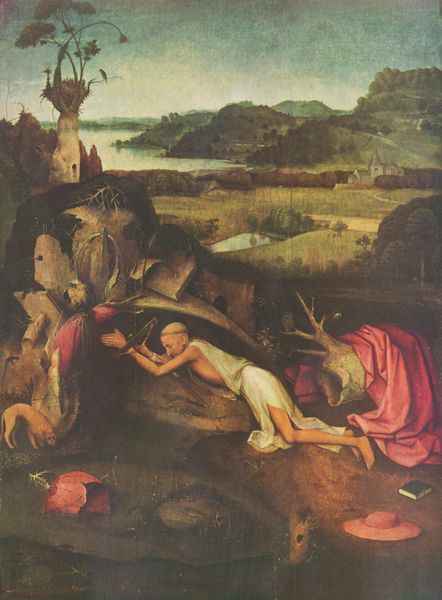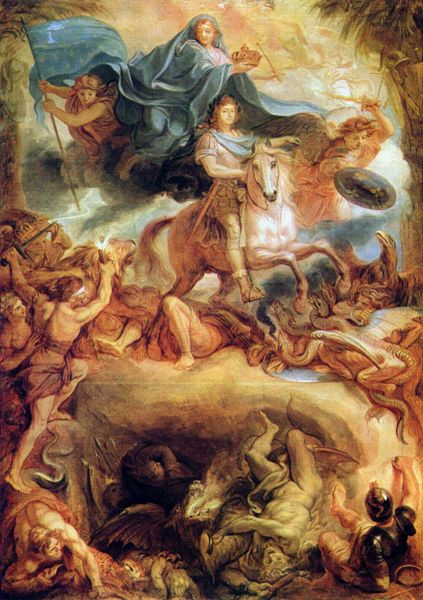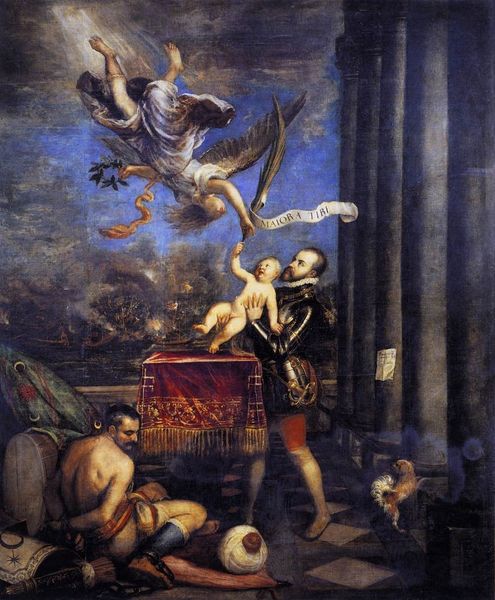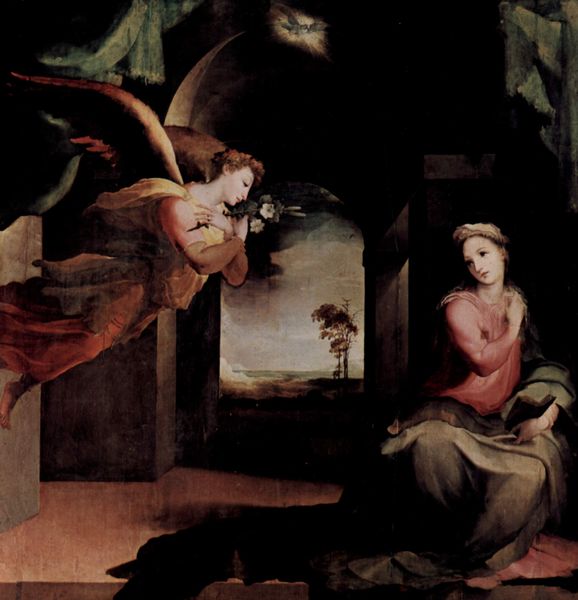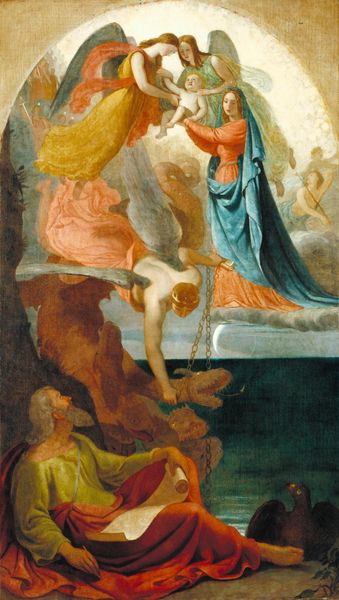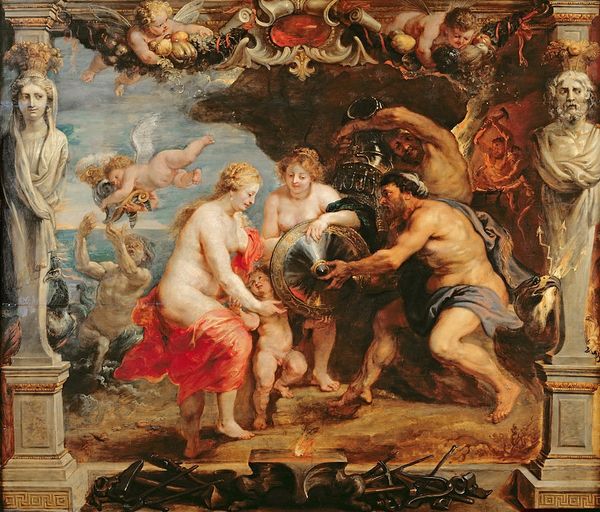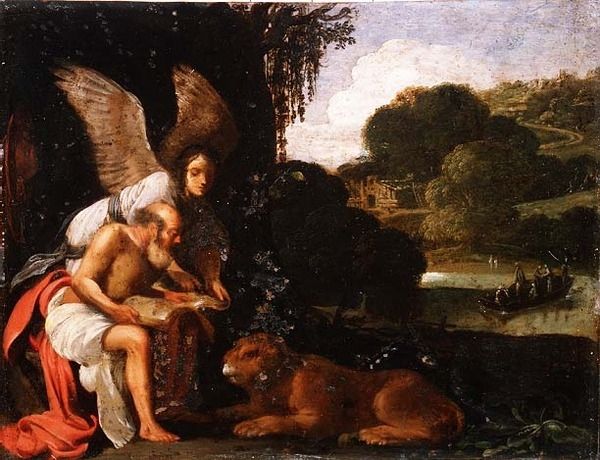
painting, oil-paint
#
venetian-painting
#
painting
#
oil-paint
#
figuration
#
oil painting
#
roman-mythology
#
mythology
#
history-painting
#
italian-renaissance
#
nude
Dimensions: 260 x 211 cm
Copyright: Public domain
Curator: Let's turn our attention to Paolo Veronese's "Perseus Freeing Andromeda," a compelling oil on canvas created around 1578. It's currently housed in the Musée des Beaux-Arts de Rennes. Editor: Oh, wow, what strikes me first is the dynamism! Perseus is like, totally rocketing down from the sky. You almost feel the wind whipping through his cloak. It’s operatic, almost theatrical! Curator: Indeed. Veronese masterfully captures a moment of dramatic rescue from Roman mythology. Andromeda, unjustly punished, is chained to a rock as a sacrifice to a sea monster. Perseus arrives, sword drawn, to save her. Think of the sociopolitical context: public executions were spectacles and Veronese’s vision translates this high drama into a courtly context. Editor: I see what you mean! The theatrical lighting helps with that – that strong contrast makes it dramatic but keeps it pretty light. What's cool is he doesn’t shy away from Andromeda's vulnerability – it’s empowering somehow that she is nude and not objectified. Curator: That's a crucial point. There is agency embedded within that alleged defenselessness, reflecting perhaps some emerging proto-feminist themes that destabilized earlier passive representations of women in Renaissance painting. How does her near nudity work narratively? Also consider Perseus – is he acting alone or as an agent of larger power structures at play? Editor: I’d argue there’s something in how their eyes meet. There's acknowledgment between them in that singular, intimate moment of rescue. But it’s true it is still a male savior dynamic in that the sea monster and chains point toward the complex intersection of the sacred and the profane. What do we make of the theatrical architecture off to the side? It's as if Perseus arrives from the world of civilization in her defense. Curator: Exactly! That city evokes order and rationality, principles that seemingly counter the barbaric act about to take place. Veronese thus presents civilization itself as a form of protective force, as a safeguard against patriarchal excesses. The artwork becomes an early form of advocacy... Editor: That gives me so much to consider as I revisit the drama enacted here – now even on the subtlest levels! What seemed like a moment of myth transforms into something deeply enmeshed with political discourse and emotional intent. Curator: It reveals how visual language can reflect contemporary philosophical thought and actively influence discourse regarding themes of justice, power, and liberation.
Comments
No comments
Be the first to comment and join the conversation on the ultimate creative platform.
